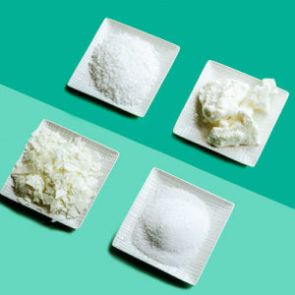Vanilla in Wax
Vanilla, with its warm and inviting aroma, has long been a popular choice for candles and wax melts. However, there’s one downside to using this beloved scent – it has a tendency to discolor the wax. In this article, we’ll explore the fascinating reasons behind this phenomenon and how you can minimize or embrace it to add a unique touch to your wax creations.
The Culprit – Vanillin:
The main component of vanilla scent is vanillin, a naturally occurring compound responsible for its sweet and comforting fragrance. While vanillin adds charm to your candle, it can also lead to discoloration. When exposed to air and light, vanillin oxidizes and undergoes a chemical reaction known as “vanillin browning”, resulting in a yellow or brown hue in the wax. This change in color can range from a light yellow to a dark brown, depending on the amount of vanilla used in the fragrance oil and the type of wax used. The vanillin will react with any additives found in the wax, as well as anything else that you may add to your wax – causing varying degrees of discoloration. The amount of vanilla contained in the fragrance also has an impact on how much of oxidization occurs.
It is important to note that the wax is still safe to use in your candle, the discoloration is merely an aesthetic impact on the wax.
The type of wax your are using also matters! Different types of wax react in varying ways to vanillin. For instance, soy wax is more prone to discoloration compared to other options like paraffin or coconut wax. The natural properties of soy wax make it the perfect canvas for vanillin to express its coloring tendencies.

Rather than seeing discoloration as a drawback, you can embrace it as a unique characteristic of your vanilla-scented candles. The rich amber or caramel tones that develop over time can add depth and visual appeal to your creations, giving them a rustic and cozy touch. Alternatively, you can try experimenting with dyes and fragrance combinations. Get creative with your wax, you can blend or layer different colored waxes to complement the discoloration caused by vanilla. By utilizing contrasting hues, you can create stunning visual effects and transform the discoloration into a visually appealing feature.
Not all fragrances that contain vanilla will cause browning. Some manufacturers add stabilizers or use synthetic vanillin, which can help prevent the color change. However, if you are making candles or other products with vanilla fragrance oil, it’s a good idea to test a small batch first to see how it reacts before making a larger batch.
Vanilla, with its warm and inviting aroma, has long been a popular choice for candles and wax melts. However, there’s one downside to using this beloved scent – it has a tendency to discolor the wax. In this article, we’ll explore the fascinating reasons behind this phenomenon and how you can minimize or embrace it to add a unique touch to your wax creations.




